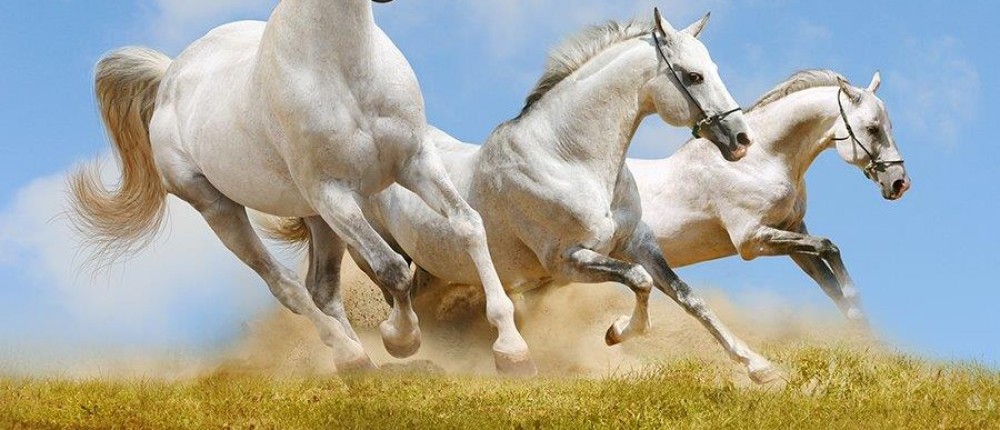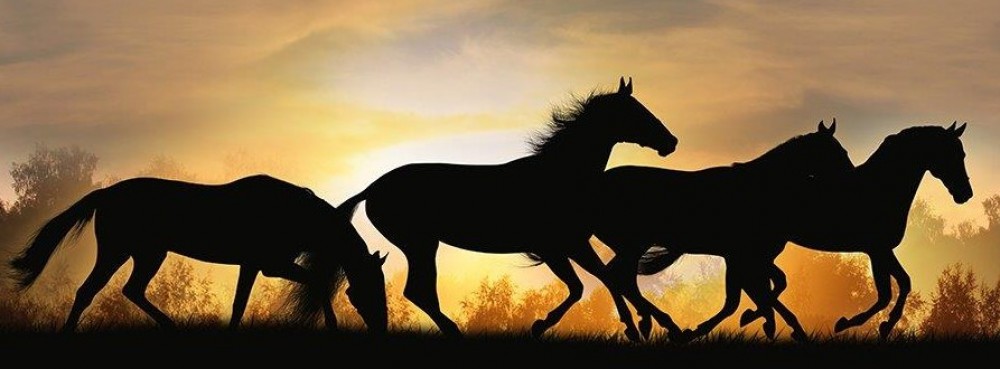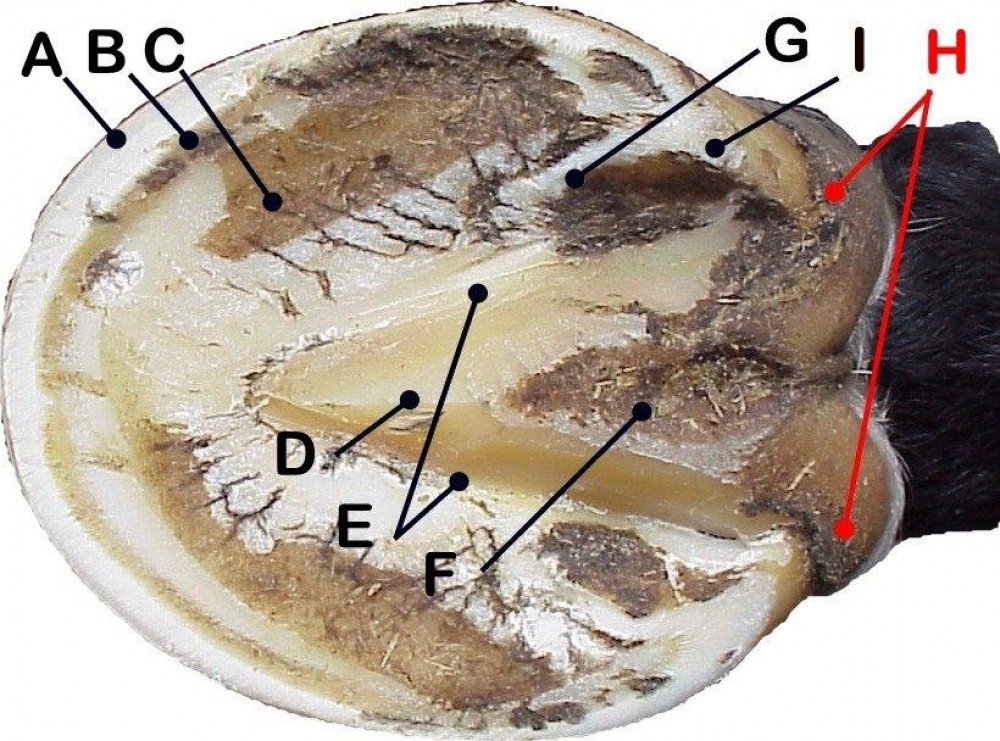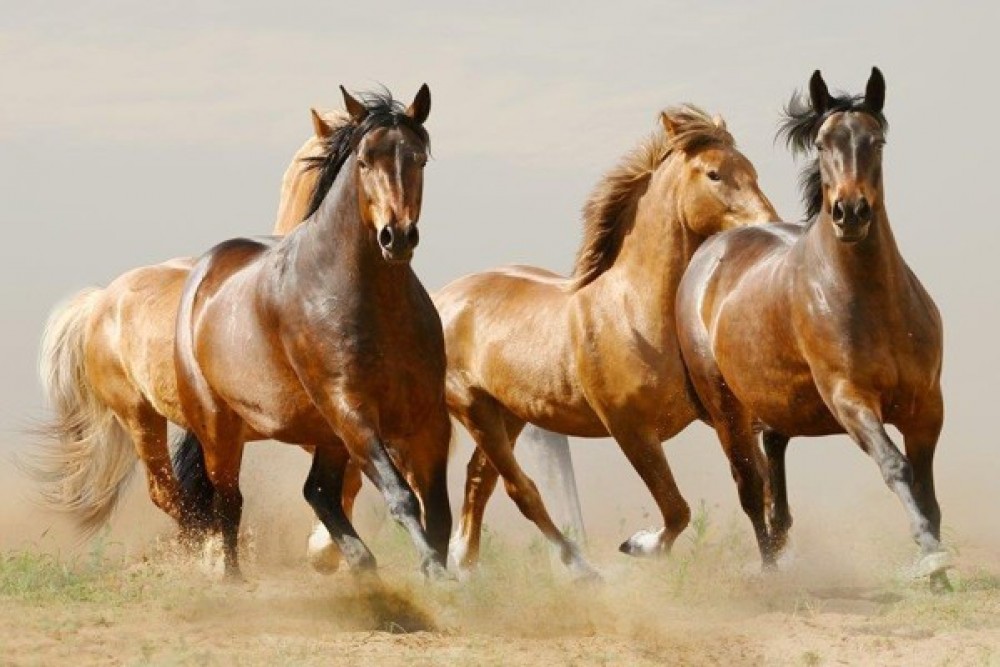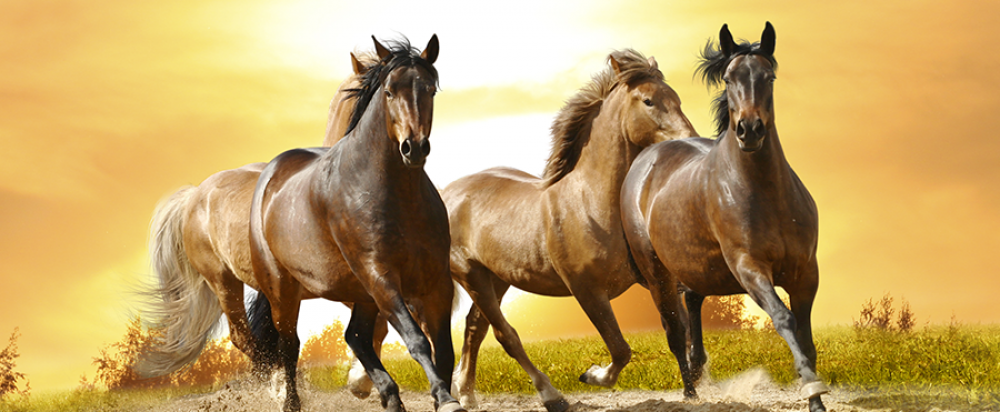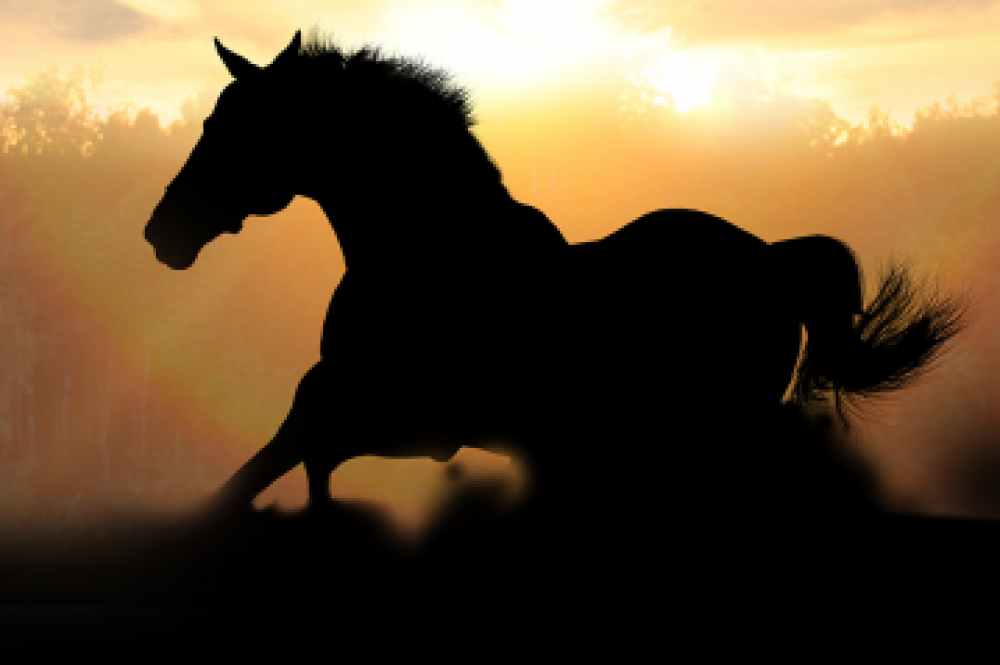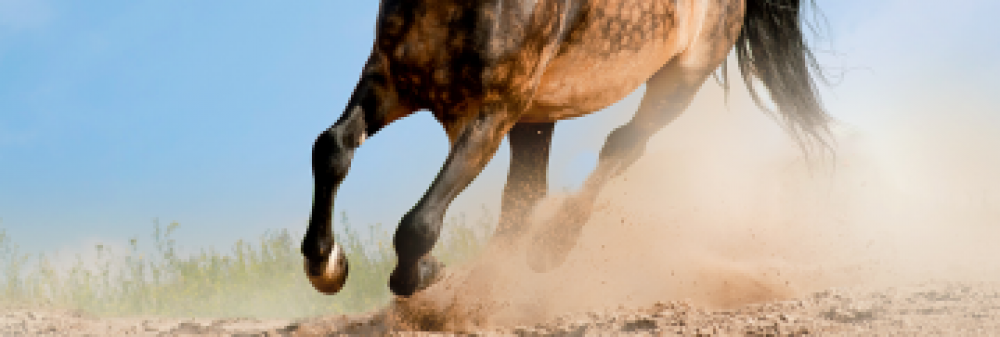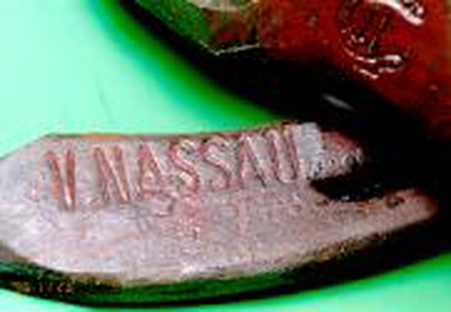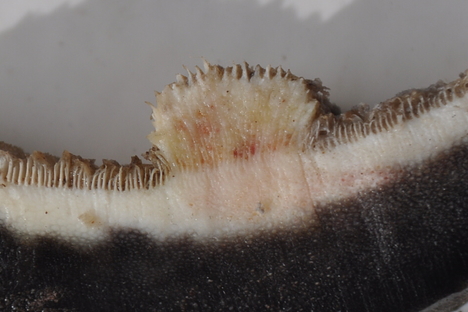© 2006 Colin Reeves
In the UK traditional farriery is strictly controlled by the Farriers Registration Council who are the governing body enforcing The Farriers Registration Act 1975 with Amendment 1977. The Farriers Registration Act was drafted to be an animal welfare Act and as such imposes stringent requirements on anyone wishing to work as a farrier – or trim horses hooves in preparation for the fitment of a shoe- and surprisingly it is lack of definition in this proviso that has opened the flood gates for barefoot trimming in this country.
To become a Registered farrier takes four years as an apprentice under an Authorised Training Farrier, with formal college training and an exam each year and a final exam for qualification at the end of the four years. During the apprenticeship period, and prior to passing the final exam, trainee farriers are allowed to trim horse’s feet and fit shoes under the guidance of a Registered farrier.
In contrast, anyone wishing to become a Barefoot Trimmer in the UK can do so without any training or assessment of their competence and because of the shortcomings of The Farriers Registration Act 1975, which never took account of this trend towards Barefoot Trimming, they can legally set up in business to trim horse’s hooves without any training whatsoever. The nearest The Farriers Registration Act 1975 comes to acknowledging hoof trimming by persons other than a Registered Farrier is contained in a caveat that it is illegal for anyone other than a Registered Farrier or Vet to trim horses hooves for the purpose of fitting a shoe (the intention here was to allow basic trimming by unqualified persons of mares, foals and horses normally unshod) and of course this is not the purpose of Barefoot Trimming , so it does not apply and leaves it open for any Barefoot Trimmer to ‘legally’ trim horses feet, since the trim is quite specifically not for fitting a shoe. The changes to the hoof, frog and sole made by Barefoot Trimmers are quite obviously far in excess of what the Act intends.
The Act is vague as to the extent of trimming allowed by an unqualified person, but generally would be interpreted to mean a basic trim, rather than radically reshaping the horn, soles and frog as practised by Barefoot Trimmers, and certainly no procedure that would cause lameness, such as removing the bars. So in all probability most procedures carried out by Barefoot Trimmers are far more extreme than the Act allows and as yet a cautious blind eye is being turned to these activities by The Farriers Registration Council.
In the fullness of time, and due to changing trends, we now see the drafting of The Farriers Registration Act 1975 to be quite inadequate at protecting horses from anyone who decides their destiny lies in trimming horses to go barefoot and The Farriers Registration Council seem unprepared to take any action for the moment and gave me the following statement:
| Under the Farriers (Registration) Act 1975, as amended, farriery is defined as “any work in connection with the preparation or treatment of the foot of a horse for the immediate reception of a shoe thereon, the fitting by nailing or otherwise of a shoe to the foot or the finishing off of such work to the foot”. This means that trimming where the hoof is to remain unshod falls outside this definition.The FRC does not recognise any of the courses provided by various barefoot/natural organisations since they fall outside the current definition of farriery and are therefore outside its remit.The definition of farriery in the Act was written in 1975 when farriery was regulated for the first time and was worded that way in order that simple trimming and rasping of horses’ feet would be allowed by lay persons to permit maintenance of foals’ and other unshod horses’ feet. Where more radical trimming and reshaping of horses’ feet is There are no immediate plans to amend the definition of farriery Mrs Felicity Heather Registrar |
So, on the one hand you have professional farriers who are trained for four years, tested and constantly regulated before they are allowed to trim or shoe horses, and on the other a system that allows any Tom, Dick or Harriett (unsurprisingly many Barefoot Trimmers are women) loose to hack away at horses feet and profess that they know what they are doing.
Hardly a good situation for the horse as this barefoot and ‘natural’ trend takes on pace.
You might wrongly assume that I am against Barefoot Trimming, but that is far from true. What concerns me is the growing number of organisations here in Europe and the US professing to have found the perfect way to trim horse’s feet in order for them to go unshod. And guess what? Each one is different! This is Marketing, where a product needs a USP: a Unique Selling Point. Just how many ways can there be to trim a hoof to emulate a natural unshod hoof? Which method is right and is it worth the risk finding out? Even more important is whether it is applicable to a domesticated horse.
If I were entirely cynical I might assume the ‘inventors’ of all the different Barefoot Trimming regimes to be purely egotistical and commercially motivated. Undoubtedly some are, but also there are those who appear well intentioned, if not dangerously uninformed. They mostly offer highly priced courses, (None of which are approved by the Farriers Registration Council or the Veterinary profession) with expensive supporting videos, books and products. The students seem completely brainwashed by whichever barefoot guru they chose to follow and put one in mind of disciples who slavishly follow every regime or process without thought or reference to more traditional hoofcare methods. In fact they are discouraged from considering anything outside of what they are taught and only to use products supplied and approved by their teachers. The worrying thing is that they are blinkered to all else as if they had been indoctrinated into some cult belief and do no more or less than what they have been taught by their guru. A case of ‘don’t bother me with the facts, this is how I have been told to do it’
But it does not stop at just trimming hooves to go barefoot. Along with the dubious hoofcare practices comes a whole plethora of environmental and mental regimes designed, we are told, to improve the wellbeing of both the horse and owner.
It seems as though there is a fundamental striving toward a ‘natural environment’ and then to market it and thrust it on to the unsuspecting domesticated horse and its owner, no matter how inappropriate. I have seen first hand proof that what is said to work in the US quite definitely does not work in the UK without considerably help from special products that help stabilise the hoof in a natural state in an un-natural environment.
So lets look at what might be considered natural for a wild undomesticated horse and how that might be interpreted within a domesticated environment.
| Function | Natural Wild Horse | Domesticated Horse |
| Ridden | No | Yes |
| Close human contact | No | Yes |
| Reliant on man | No | Yes |
| Trained | No | Yes |
| Roaming | Yes | No |
| Searches for food | Yes | No |
| High nutrient feed | No | Yes |
| Stabling | No – seeks shelter | Desirable |
| Shod | No | Generally |
| Hooves manually trimmed | No | Yes |
| Traverses mixed terrain | Yes | No |
| Vet/Farrier intervention | No | Yes |
| Predators | Yes | No |
| Natural selection | Yes | No |
| Controlled breeding | No | Yes |
| Live as a herd | Yes | Rarely |
| Self sufficient | Yes | No |
There are many more examples that can be added to the above list, but still it is very clear that the husbandry surrounding the domesticated horse is hugely different to a wild horse and will ultimately change how it tolerates living in a given environment, both mentally and physically.
Taking the shoes off and introducing a 24/7 live out regime in Northern European climates is in no way natural for a domestic horse that has been bred for Man’s use and has lost most of the attributes they would need to live in anything approaching a natural wild environment. In any case it would be quite impossible to create a ‘natural’ environment with different terrain and enough space to roam and still have a horse that is expected to be used for riding. ‘Natural’ in the trimmers vocabulary is in fact a huge compromise tailored to Man’s needs and not that of the horse.
Domestication of any animal means breeding or training out the wild instincts and traits so it can live alongside and be at the behest of Man. It is stupidity in the extreme to think that any domesticated animal can adapt to any sudden reversion to an improvised natural or wild state. And even if it can it needs considerable intervention to help it on its way.
I have always been an advocate of horses being kept barefoot if they can tolerate the conditions or the use to which they might be put, but it is a fact that until quite recently there has been little alternative for any horse, whether they be for sport, leisure or work, other than traditional nailed on shoes. Farriery has become a skilled profession in its own right based on practical research from around the world. We know more now that ever before about the anatomy of the horses foot and how to keep it sound, but equally we know that getting a previously shod horse to go barefoot and still do what it did as a shod horse is nigh on impossible without the use of products that optimise the strength of the hoof capsule and protect it from adverse environmental conditions.
The traditional nailed on shoe was needed to support the structure of the hoof wall and prevent premature wearing, due in main to the horn structure being compromised by wet winters and dry summers which have the effect of destroying the integrity of hoof horn at molecular level and the reason for cracked hooves and lost shoes. This is an environmental problem that even nailed on shoes cannot overcome, so removing shoes and doing nothing to protect against environmental effects will be disastrous, and it is already proving to be the case with many horses in their first year of being barefoot.
The hoof wall becomes sodden in winter and softens causing the whole hoof capsule to spread and collapse. Horizontal and vertical cracks start to appear; white line disease and thrush become rampant. Soles start to collapse, become bruised and abscesses result. Frogs rot and become infected. Any hoof balance the trimmer might have introduced is lost as the walls spread and the heels collapse.
If the horse owner is sensible they call their vet and farrier, swallow their pride and pay up for months of special farriery to get the feet right again.
If the horse owner is gullible they believe what many of the Barefoot Trimmers tell them –“don’t worry the hooves have to go through this period of readjustment and the horse might be lame for a year or two” …… more likely forever!
Now this is where the fence sitting Farriers Registration Council could rear its head and use some clout, because basically under the Farriers Registration Act it is illegal for anyone, other than a vet or farrier, to use any procedure that results in discomfort or lameness to the horse.
Fortunately the Veterinary profession are somewhat more proactive and cases have been brought against Barefoot Trimmers by Vets under the outdated Protection of Animals Act 1911 and the Courts have found against the Trimmers. Legal Precedents are being made and there are several more cases in the pipeline.
Now this may all sound like gloom and doom for anyone considering having their horse barefoot, but it needn’t be, there are Barefoot Trimmers and there are barefoot trimmers. In traditional circles barefoot trimming has had a mixed press – Simon Earle’s racing yard had a very successful start racing horses barefoot using the principles of K C La Pierre, but followers of the Strasser method have been vociferously criticised by both the Veterinary and Farrier professions. I asked Tania Lonning, a proven Norwegian Barefoot Trimmer, now residing in the UK, for her comments about what to look for and expect from any Barefoot Trimmer you might consider letting loose on your horse’s feet.
“Some years back I decided to have my horse barefoot and not fully understanding the implications found a Barefoot Trimmer (one of the foremost in Norway) to pull the shoes and prepare the hooves. The horse instantly went lame and I was horrified that I had been instrumental in causing him pain. I was told that this lameness was to be expected and was an essential part of the transition to barefoot. Furthermore, I should expect this lameness to last for months, maybe years, but not to worry ”it was all part of the process”. I went this route as much for the horse, thinking of freeing him from nails and shoes, but what had been a wonderful free moving animal was now a miserable wreck able only to walk on grass and when I was able to ride him I felt his pain. I was also advised that part of the process of reverting back to a natural barefoot would be leaving the horse out 24/7 which I also found difficult to accept in such a harsh climate as Norway.
But still I felt that barefoot had its merits, so I sought out as much information as I could about all the different types of barefoot trim that were available from Europe and the US. The method that most suited what I expected from going barefoot came from a little known (in the UK at least) US farrier called Bergy Bergeleen. Bergy is clearly not a fanatic – he also shoes horses traditionally. His view is that there should be no difference in the hoof balance between shod and barefoot hooves except for some small differences like not making the underside of the hoof flat and rounding off the hoof wall. Since all the Barefoot Trimmers in Norway at that time were following radical and intrusive methods of trimming I decided I would train to use Bergy’s principles myself; which I did. Since then I have had my own horse barefoot for more than three years, living in the extremes of the Norwegian climate. He is used over all types of terrain, from rough forest tracks to roads, without ever being lame or sore and I now trim horses for individuals in Norway and a big riding ranch in Sweden using this method. One thing I found early on was that no matter how good the trim, the structure of the hooves and soles needed help to keep them in optimum condition in a changing climate. I tried all the usual hoof dressings and feed supplements without much success until I came across the Keratex range of products from the UK. Keratex Hoof Hardener was the answer to a prayer, because it strengthened the sole and wall, preventing the hoof from spreading and protected the sole from bruising – abcesses in the sole are a big problem for barefoot horses, but initial treatment with Keratex Hoof Hardener has eliminated this completely in all the horses I trim. I now treat all newly trimmed hooves with Keratex Hoof Hardener daily for at least six weeks, or until the hoof is fully balanced and shaped for correct function when barefoot. At this point I use Keratex Hoof Gel as a daily maintenance to keep the hooves protected from excess water and urine. In actual fact Keratex Hoof Gel helps create a more natural environment for the hoof by maintaining a natural moisture content in the horn and sole which is stabilised rain or shine from within the hoof rather than the result of environmental conditions. It is now well known that horn is at its strongest with a moisture content around 25% and this is the level at which the horse will naturally maintain it. As a result the horn and soles, protected from the adverse environmental effects of moisture, actually become naturally stronger allowing the barefoot horse to have far greater resilience in all manner of environmental conditions. This special treatment is absolutely essential for keeping barefoot horses sound and has already been used on shod horses for 15 years or more for the same reason.
So what should you expect from a barefoot trim?
The horse should not go lame as a result of the trim, but expect the horse to be a little foot sore for a couple of days purely as a result of the shoes coming off. Here again treating the sole with Keratex Hoof Hardener before and after removing the shoes will help enormously in the transition to barefoot. The sole needs little attention other than removing the dead chalky tissue to expose the sound surface. NEVER allow the trimmer to remove the bars of the hoof. If he suggest doing this then keep him away from your horse! The bars are an essential part of the hoof/sole structure and provide strength to help stop the heels from spreading. The barefoot procedure is supposed to emulate a natural foot and this type of drastic intervention has nothing to do with the natural horse. No trimming should cause the horse to bleed. The natural horse bears its weight on the outermost part of the sole and not the hoof wall, so this area of the sole must be preserved. The hoof needs balancing medially and laterally so the horse can carry his weight straight over the feet. This may take a few trims to get absolutely right as you may need the horn to grow to allow the trim to effect perfect balance. A word of warning: drastic rebalancing of the hoof can cause problems with the joints as they are realigned, so if in doubt talk to your Vet first. The frog should be trimmed so that it is free from loose or rotten tissue and should be brought down to just below the level of the bearing surface of the hoof. Needless to say any infection should be treated at this early stage. The bars should be trimmed back about level with the sole only if they have collapsed or folded over, otherwise they should be left untouched. The toe section of the hoof wall should be rounded off to aid breakover under movement. The hoof wall is not meant to carry weight, so all that is need is to rasp the wall so that it follows the angle of the first 5mm of growth from the coronary band down and to remove any flares at the base.
These are just a few basic guidelines of good practice. If your trimmer proposes anything more extreme then first talk to your Vet and/or Farrier, because once someone starts hacking away at your horses hooves without precisely knowing what they are doing it takes a long time to put it right.” – Tania Lonning
Realise that unlike your farrier a Barefoot Trimmer, whoever they may be, has had no training recognised by any professional bodies involved with farriery of the welfare of the horse and some may have had no training at all. As the law currently stands in the UK anyone can set themselves up as a Barefoot Trimmer, so before you allow anyone to touch your horse go and see other horses they have trimmed; ask the owners for a calendar of events since the shoes were first taken off. Take a look at the horse’s feet and ask what sort of work it does and how well it copes with it. Having decided to have your horse barefoot do not be dissuaded by the Trimmer from using modern products that are proven to strengthen and protect hoof horn and soles; without any doubt your horse will need this extra help to remain sound in UK type climatic conditions.
One last point; going barefoot is neither a cheap nor easy option compared with traditional farriery because unshod hooves will need constant care to maintain them in optimum condition – and if you decide barefoot is for you never sack your farrier, because you might just need him sooner than you think.
Colin ReevesColin is Managing Director of Equine Products Corporation Limited
